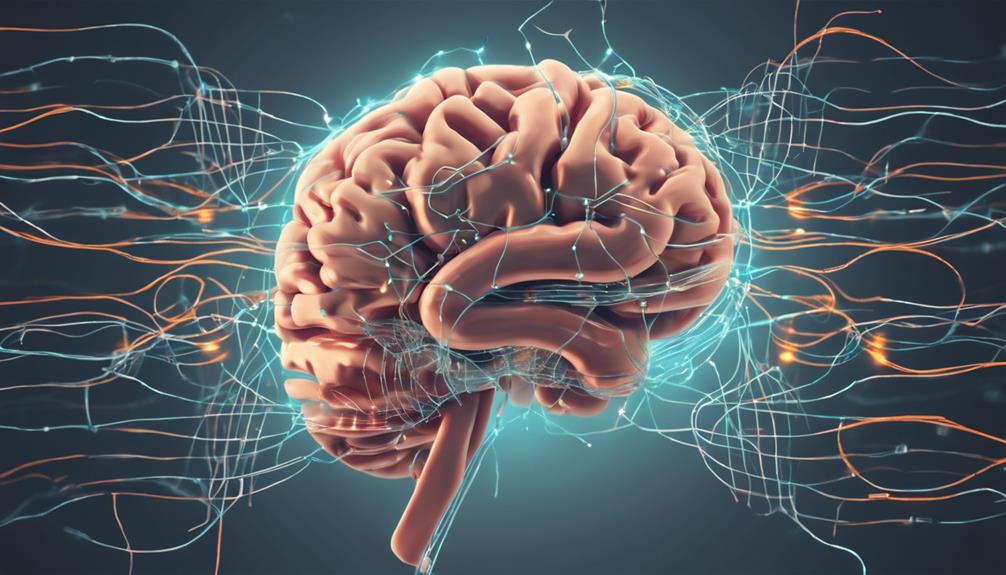Efficiently planting subconscious suggestions involves understanding the power of the subconscious mind and crafting persuasive subliminal messages. Utilize visualization techniques to engage the mind's ability to create mental images and implement repetition for reinforcement. Creating positive affirmations tailored to specific goals and incorporating emotional triggers increase effectiveness. Identifying roadblocks and resistance is crucial for personalized approaches. Track results to celebrate progress and motivate further development. Adjust strategies to individual needs for successful transformations. Emphasizing continuous progress through small victories fosters a positive mindset. Explore these methods to unlock the hidden potential of subconscious suggestion planting.
Understanding Subconscious Mind Influence

An in-depth comprehension of the subtle yet powerful influence of the subconscious mind is crucial for effectively planting suggestions within the depths of one's psyche.
The subconscious mind operates beyond our conscious awareness, making it a potent force in shaping our beliefs, behaviors, and perceptions. Through subconscious programming, individuals can unknowingly adopt patterns of thinking and acting based on past experiences, traumas, or learned behaviors. Understanding subconscious triggers is essential in identifying the stimuli that evoke specific responses from the subconscious mind.
The subconscious mind's influence is vast, often dictating our reactions to external stimuli without our conscious realization. Its power lies in its ability to store memories, emotions, and beliefs that can significantly impact our decision-making processes. By tapping into the subconscious power, one can leverage this reservoir of information to influence and shape one's thoughts and actions.
Recognizing the intricacies of subconscious influence allows for the strategic placement of suggestions that align with desired outcomes, thereby maximizing the efficacy of subconscious messaging techniques.
2. Crafting Persuasive Subliminal Messages
Understanding the nuances of the subconscious mind's influence paves the way for crafting persuasive subliminal messages that resonate deeply with individuals' underlying beliefs and behaviors.
Subliminal messaging involves the subtle presentation of information that bypasses conscious awareness but can still impact decision-making processes. To create effective subliminal messages, one must employ specific persuasion techniques that tap into the subconscious mind. These techniques may include using emotionally charged language, subtle visual cues, and repetition to reinforce the desired suggestion.
When crafting subliminal messages, it is crucial to consider the principles of subconscious planting and influence strategies. By understanding how the subconscious mind processes information and shapes beliefs, one can tailor messages to align with preexisting thought patterns. Utilizing influence strategies such as social proof, scarcity, and authority can further enhance the effectiveness of subliminal messages.
3. Utilizing Visualization Techniques

Utilizing visualization techniques effectively can significantly enhance the impact of subconscious suggestions by engaging the mind's powerful ability to create mental images. Visualization exercises involve actively picturing desired outcomes or scenarios in one's mind, harnessing the brain's capacity to respond to vivid imagery.
Guided imagery techniques further refine this process by providing structured narratives or prompts that help individuals focus their visualizations towards specific goals or changes they wish to instill subconsciously.
Through visualization, individuals can immerse themselves in a detailed mental representation of their aspirations, reinforcing the subconscious mind's receptiveness to these suggestions. By repeatedly visualizing a desired outcome with clarity and emotional involvement, individuals can facilitate the integration of these suggestions into their subconscious beliefs and behaviors.
This technique taps into the brain's inclination to perceive imagined scenarios as real experiences, thereby fostering a deeper acceptance and internalization of the suggested ideas. In essence, visualization serves as a potent tool for embedding subconscious suggestions with precision and effectiveness.
4. Implementing Repetition for Reinforcement
Consistently reinforcing subconscious suggestions through strategic repetition is a key element in solidifying their impact on an individual's mindset and behavior. By using subliminal cues and behavioral conditioning techniques, these suggestions can be deeply embedded in the subconscious mind, leading to lasting changes in thought patterns and actions.
Subliminal cues, such as subtle visual or auditory stimuli, can be employed to reinforce the subconscious suggestions. These cues bypass the conscious mind, directly influencing the subconscious and strengthening the desired beliefs or behaviors. When these cues are repeated consistently over time, they become more ingrained, making the suggestions more powerful and effective.
Behavioral conditioning is another powerful tool for implementing repetition. By consistently pairing the subconscious suggestions with specific behaviors or actions, individuals can create strong associations between the suggestion and the desired outcome. This repetitive reinforcement helps to rewire the brain's neural pathways, making it easier for the subconscious mind to adopt and act upon the suggested ideas.
5. Creating Positive Affirmations

Effective creation of positive affirmations involves crafting statements that resonate with the individual's core beliefs and values, fostering a sense of empowerment and motivation. Affirmation techniques play a crucial role in shaping these statements to be impactful.
When creating positive affirmations, it is essential to use present tense, positive language, and specific details to enhance their effectiveness. By formulating affirmations in this manner, individuals can program their subconscious mind to internalize these empowering messages.
Subconscious programming through positive affirmations requires consistency and repetition. By repeating these affirmations regularly, individuals can gradually rewire their subconscious beliefs and thought patterns. It is important to tailor affirmations to address specific goals or areas of personal development.
This customization ensures that the subconscious mind receives targeted messages for positive transformation. Incorporating personal values and beliefs into affirmations strengthens their impact. Individuals should reflect on what truly matters to them and integrate these aspects into their affirmations.
6. Incorporating Emotional Triggers
How can emotional triggers be strategically integrated into subconscious suggestions for efficient planting?
Incorporating emotional connections into subconscious triggers is a powerful method to enhance the effectiveness of planting suggestions. By tapping into emotions, suggestions can become deeply ingrained in the subconscious mind, leading to lasting behavioral changes.
When incorporating emotional triggers, it is essential to identify the specific emotions that resonate with the individual. Whether it is joy, motivation, or a sense of accomplishment, aligning the suggestion with the right emotional trigger can strengthen its impact.
For example, associating a healthy habit with the feeling of pride can create a strong emotional connection that reinforces the desired behavior.
Furthermore, using storytelling or visualization techniques can help evoke emotions that support the subconscious suggestion. By painting a vivid picture that elicits the desired emotional response, the suggestion becomes more compelling and memorable.
7. Monitoring Progress and Adaptation

To ensure the efficacy of subconscious suggestions, diligent monitoring of progress and adaptation is imperative in cultivating lasting behavioral changes. Tracking results allows for a comprehensive understanding of the impact of the suggestions planted in the subconscious mind. By consistently assessing the individual's response to these suggestions, one can gauge the effectiveness of the strategies employed.
Monitoring progress provides valuable insights into the rate of acceptance and integration of the subconscious suggestions. It enables practitioners to identify any roadblocks or resistance that may hinder the desired behavioral changes. Additionally, tracking results allows for the celebration of small victories along the way, motivating individuals to continue their journey towards personal development.
Inevitably, not all strategies will yield the desired outcomes initially. Hence, adjusting strategies based on the monitored progress is crucial for adapting to the individual's unique needs and preferences. Flexibility in approach ensures that subconscious suggestions are tailored to resonate effectively with the individual, maximizing the potential for successful behavioral transformations.
Frequently Asked Questions
Can Subconscious Suggestions Be Used for Overcoming Phobias or Fears?
Subconscious suggestions can play a pivotal role in fear management and phobia treatment. By strategically planting positive affirmations and visualizations, individuals may gradually overcome phobias and fears, leading to improved mental well-being and enhanced quality of life.
Is It Possible to Plant Subconscious Suggestions Without the Person's Consent?
Planting subconscious suggestions without consent raises significant ethical implications and legal concerns. Covert persuasion and manipulation techniques can harm individuals' autonomy and mental well-being. Respect for autonomy and informed consent is paramount in any form of influence.
How Long Does It Take for Subconscious Suggestions to Take Effect?
The effectiveness of subconscious suggestion timelines varies depending on individual receptiveness and the complexity of the suggestion. Repetition plays a vital role in reinforcing these suggestions, with noticeable impacts often seen within weeks to months of consistent practice.
Can Subconscious Suggestions Be Used to Change Deeply Ingrained Beliefs?
Cognitive restructuring aims to alter deeply ingrained beliefs by challenging and reframing existing belief systems. Hypnotherapy and positive affirmations can be effective tools in facilitating this process, encouraging the subconscious mind to adopt new, empowering perspectives.
Are There Any Risks or Side Effects Associated With Planting Subconscious Suggestions?
When considering the implementation of subconscious suggestions, it is crucial to acknowledge potential dangers and drawbacks. Negative consequences may include unintended shifts in beliefs, resistance, or triggering of unresolved issues. Understanding these limitations is paramount for successful outcomes.
Conclusion
In conclusion, the utilization of effective methods for planting subconscious suggestions efficiently can lead to significant changes in behavior and mindset. By understanding the power of the subconscious mind, crafting persuasive subliminal messages, utilizing visualization techniques, implementing repetition, creating positive affirmations, incorporating emotional triggers, and monitoring progress, individuals can harness the power of their subconscious to achieve their desired outcomes.
It is essential to approach this process with intention, consistency, and mindfulness to maximize effectiveness.





































